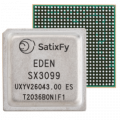Paris Space Week 2022
17 Feb 2022
The 9th edition of Paris Space Week will take place in Grande Arche Area at the heart of Paris, on March 14th and 15th, 2022. Discover or rediscover your partners through B2B meetings, conferences, dinners, demonstrations or even innovation challenges with pitches in front of a jury of experts












